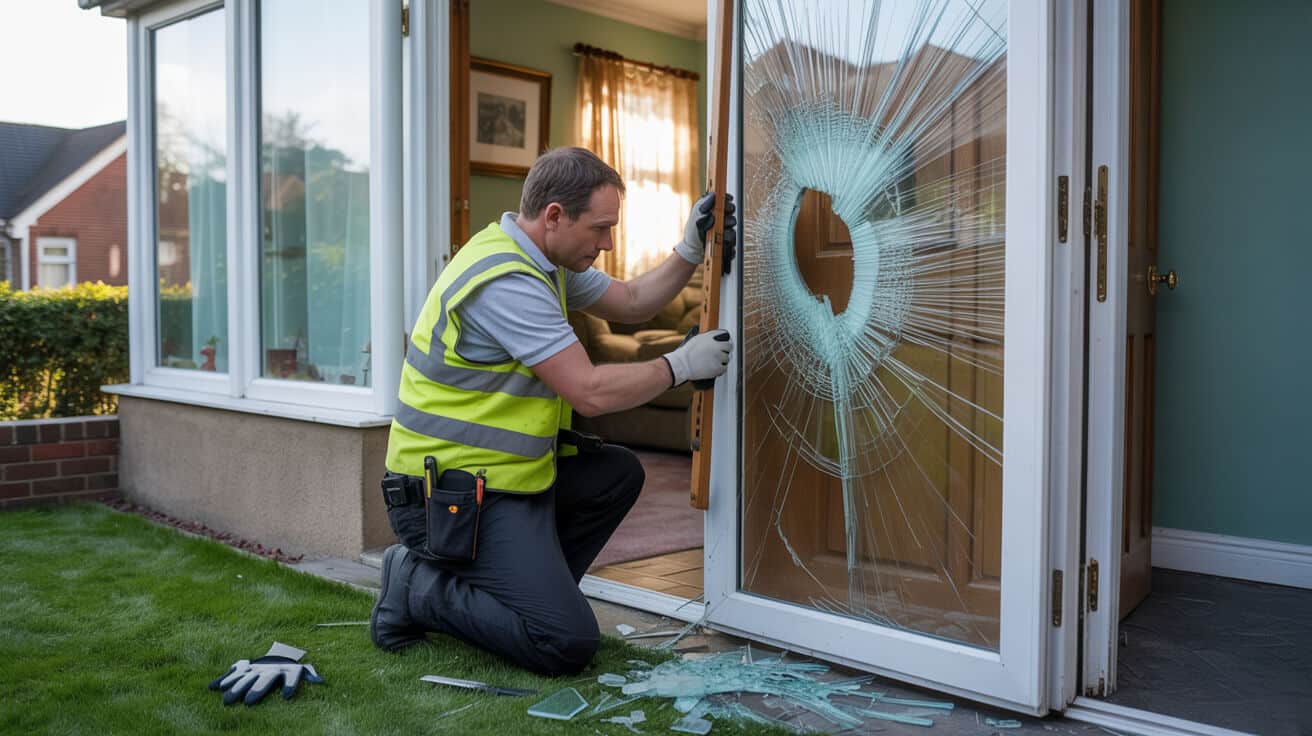 What Is Considered ‘Reasonable Time’ For A Landlord To Complete Repairs
What Is Considered ‘Reasonable Time’ For A Landlord To Complete Repairs

Why Does ‘Reasonable Time’ for Repairs Matter More Than You Think?
Delays in property repairs can quietly erode your sense of safety, disrupt your day-to-day, and leave you doubting whether your landlord is truly accountable. “Reasonable time” isn’t just a phrase buried in legal jargon—in practical terms, it means the difference between living in a property with confidence, or spending weeks chasing updates on an issue that’s making your life harder. The UK’s laws are intentionally flexible about timetables, but as a tenant or property owner, vague wording can become a headache when you’re simply trying to maintain a decent standard of living.
A safe home isn’t a luxury—prompt repairs protect your wellbeing and your wallet.
Understanding what counts as “reasonable time” empowers you from the moment something goes wrong. This guide demystifies regulations, shares real-world timeframes, explains the value of proper documentation, and gives you powerful steps to regain control—whether you’re battling a major leak, a stubborn landlord, or the small fixes that never seem to get done. With the right action plan, you shift from powerless to proactive, confident you’re protected by more than just fine print.
How Is ‘Reasonable Time’ for Repairs Actually Determined?

In UK tenancy law, “reasonable time” is a sliding scale: it adapts to the repair’s urgency and how much the problem disrupts daily life. The clock starts ticking as soon as you notify your landlord—ideally, in writing. From there, all eyes are on two things: the seriousness of the problem, and whether your comfort or security is at risk.
No two cases are identical, but public authorities (Shelter, Citizens Advice, multiple councils) and industry codes have created practical brackets:
- Emergency repairs: within 24 hours:
- These must be tackled immediately if safety is at stake—think gas leaks, major flooding, a complete loss of heat or power, or a broken front door.
- Urgent repairs: within 3–7 days:
- These disrupt your life but aren’t immediately dangerous, like a partial loss of heating or a blocked drain.
- Routine repairs: within 2–4 weeks:
- These affect comfort more than safety—dripping taps, sticky windows, worn carpets (*Shelter England*).
Landlords are expected to act faster if conditions deteriorate or if tenants are vulnerable. If they don’t, councils refer to these yardsticks to rule on complaints.
You don’t have to wait indefinitely—industry standards set clear boundaries on what’s fair.
Consistency matters. A landlord’s delay can be justified (parts on back-order, unavoidable scheduling issues), but “reasonable” never means “whenever they feel like it.” The law expects good faith, transparency, and proof that the landlord’s taking action, not just buying time.
What Is an Emergency Repair—and How Fast Is Fast Enough?

If your health or safety are under direct threat, “reasonable time” is now—not next week. UK authorities treat emergencies as issues that seriously risk people or property. Landlords must act within 24 hours—the goal is to make the situation safe immediately, even if a full fix takes longer.
Emergencies include:
- Gas leaks, carbon monoxide alerts, or alarms sounding
- Major water leaks or flooding threatening structure
- Complete loss of essential services (heating, power, water)
- Broken doors or locks that let anyone in
- Exposed wiring or electrics sparking fire risks
Local authorities—like Islington and Shelter—consider the 24-hour window non-negotiable (Islington Council emergency repair standards, Shelter England). If it’s not safe, councils have the power to send in their own teams and bill the landlord.
If the repair could harm you or your home, document it, call in, and get the clock started immediately.
When you notify your landlord, always state—clearly and calmly—that the issue is an emergency. Follow up by text or email, include photos if possible, and keep a copy. If there’s no response or the risk remains past the deadline, inform your council’s housing or environmental health team right away.
What Counts as Urgent? Timelines and Tenant Rights

Not every problem justifies blue lights, but urgent repairs still matter because quick fixes can prevent bigger disasters. Landlords should handle these within 3–7 days from your notification, aiming for the shorter end when the situation could worsen.
Urgent repairs include:
- Blocked toilets (with no backup available)
- Heating or hot water loss (especially for families or winter months)
- Leaking roofs or burst pipes causing ongoing damp
- Security alarms or fire systems down
- Plumbing faults leading to rapid escalation
Shelter and Citizens Advice highlight that clear, written requests start the clock (Citizens Advice repairs guidance). If your landlord gives vague promises but doesn’t act, follow up every few days and, if there’s no progress, escalate.
A written request should:
- State the problem, date, and whether it’s getting worse
- Ask for an estimated repair date
- Attach photos for proof
Don’t assume silence means progress—a polite reminder with a timestamp keeps your repair top of mind.
Some landlords will explain valid reasons for delay; others won’t. Your paper trail is your proof—and your ticket to council enforcement if you need it.
Are Routine Repairs Overlooked? When to Push for More Urgent Action

Routine repairs fill up maintenance logs and stretch patience, but they’re not optional. Landlords should address routine issues—think worn-down fittings, stuck windows, minor drips, or loose latches—within 2–4 weeks as a baseline. Regulations, contracts, and council best-practice guides match this timeframe (Islington repair standards, gov.uk repair info).
Crucially, a routine problem that snowballs in severity or starts impacting daily life doesn’t stay “routine” for long.
Escalate if:
- A minor leak promotes mould or water damage
- Loss of a single kitchen or bathroom feature causes hardship
- The fault affects elderly, disabled, or family with children
If escalation is needed, update your landlord in writing, include timeline photos, and clearly state the new impact. Councils are more willing to intervene when you show you’ve flagged an evolving risk.
Small problems left too long can become emergencies—don’t let routine details get lost in the shuffle.
Clear, periodic updates ensure your request remains active and demonstrate you’ve acted reasonably throughout.
How Do You Serve Notice—and How Should You Prove It?

Landlord responsibility for repairs starts with formal notice. This is your “reset button”—the moment your rights become active and the repair timeline gets locked in. The best defence against future disputes is a simple one: keep everything documented and time-stamped.
How to serve notice:
- Use email, text, or an agent’s repair portal—avoid only using the phone
- Describe the issue fully, including room, impact, and date first noticed
- Attach photographs if possible
- Request confirmation of receipt (most agents reply with an automated ticket)
- Retain all screenshots, receipts, and reference numbers
Posting a letter? Send signed-for or recorded delivery to ensure there’s a paper trail. If a landlord tries to deny communication, your archive of messages and photos will put you back on the front foot (Citizens Advice, gov.uk).
You can’t control a slow landlord—but you can control your proof. Every screenshot tilts the scales in your favour.
Documentation turns “he said, she said” into facts. If things turn sour, everything you send or record is ammunition—so take five extra minutes now, not when the dispute begins.
What Steps Win—If Repairs Drag on Beyond the Deadline?

If you’re past the “reasonable time” without visible progress, sitting quietly almost never pays off. Instead, methodical escalation is both your right and your best strategy for results. Here’s your action plan:
- Send a follow-up: Re-state your case, reference earlier messages, and politely request a final timeline (e.g., “Please confirm the repair will be completed within 48 hours.”)
- Contact your council: The local housing standards, environmental health, or private rented sector team will mediate. Bring your written trail and photos.
- Tap outside experts: Organisations like Shelter or Citizens Advice help you clarify your position, tactical options, and escalation pathways.
- Escalate via redress schemes or ombudsman: Especially effective if your letting agent or landlord is a member—it’s a route both sides take seriously.
Maintain a single document or folder with all evidence: dates, photos, requests, landlord replies, signed-for receipts. The more clear and consistent your approach, the faster external authorities take your side (parliament.uk legal briefings).
Turning emotions into evidence is your leverage—a steady, polite logbook speeds up slow repairs.
Don’t make threats or withhold rent—keep your focus on process, proof, and persistence. In cases of severe neglect, council intervention can force repairs or even prosecute landlords.
What Are the Most Common Mistakes That Delay Repairs?
Even well-intentioned tenants and landlords fall into traps that leave defects lingering or worsen living conditions. You can skip the frustration by avoiding the classic pitfalls:
- Skipping the paperwork: Verbal updates or agreements vanish if memories clash. Commit everything to writing.
- Withholding rent: However overdue repairs are, missed payments can trigger eviction proceedings ([Shelter](https://england.shelter.org.uk/housing_advice/repairs/how_long_should_a_private_landlord_take_to_do_repairs)).
- Attempting unauthorised fixes: DIY work—even just painting over mould—can create liability issues, risk your deposit, or void compliance certificates.
- Ignoring updates: A single message seldom creates urgency. Timely follow-ups keep momentum and show you’re paying attention.
- Messy records: Organise your digital archive from day one. Screenshots, emails, and photos are your insurance policy.
Skilled maintenance partners (technicians or letting agents who “get it”) are your shortcut—a professional process removes drama, paths you toward a fix, and ensures any blame sits with the right party.
Progress belongs to the best documented—outcomes are won by the most persistent, not just the loudest.
UK Legal Timeframes for Repairs—At a Glance
Landlords across England, Wales, and Scotland are measured against a toolkit of standard response times—balancing statutory responsibility with local best practices. Here’s a quick reference table to benchmark your experience:
| Repair Urgency | Typical Issue Example | Target Response Time |
|---|---|---|
| Emergency | Gas leak, flood, security failure | 24 hours |
| Urgent | Heating, blocked drains, roof leak | 3–7 days |
| Routine | Drips, hinges, minor defects | 2–4 weeks |
Agreements and tenancy contracts sometimes go further, setting stricter deadlines. Ask your letting agent or landlord for a copy of any repair policy—get it in writing. Remember, council and ombudsman standards always provide a fallback if your contract is vague.
Why All Services 4U Makes Landlord Repairs Faster, Transparent, and Stress-Free
Getting repairs sorted shouldn’t feel like a war of attrition. All Services 4U takes every headache out of repair timelines—transforming slow, ambiguous processes into accountable, rapid-turnaround fixes. When you’re unsure whether a landlord’s dragging their feet or genuinely trying, you want more than promises—you want expertise, evidence, and genuine partnership.
Here’s how All Services 4U delivers:
- Real emergency cover: Trained staff available for every category—flood, electrical, gas, structural. Response within the 24-hour window, every time.
- Total compliance: Technicians hold City & Guilds, NVQ L3, and all required UK certifications, so landlords and tenants both trust the work meets regulation.
- Proof-driven repairs: Every fix is photo-documented, logged, and time-stamped. Through transparent reports, everyone sees what’s complete, what’s pending, and how it matches “reasonable” standards.
- Clear communication: Our team walks you through each step, advises on escalation when required, and removes the fog from technical or legal jargon.
- Future-proofing: Preventive checks and records turn quick repairs into longer-lasting safety—stopping the “small fix, big issue” cycle before it starts.
Confidence is built by removing doubts with proof and speed—not just friendly words.
If you need your repair done properly and want the comfort of a process that puts your safety and convenience first, let All Services 4U step in. You’ll move from chasing updates to getting real answers, and every interaction leaves you with a stronger, safer property—on time, on budget, and on record.
Struggling with property repairs, or sick of waiting for answers? Contact All Services 4U today—get every repair completed with urgency, evidence, and total respect for your peace of mind.
Frequently Asked Questions
What determines the actual repair timeline for UK landlords—and why is “reasonable” never one-size-fits-all?
“Reasonable time” for landlord repairs isn’t an arbitrary figure. Legally and operationally, it flexes depending on urgency, health risks, tenancy details, and even the season. The Landlord & Tenant Act 1985 sets the regulatory baseline, but real momentum comes from how quickly a landlord acts after being notified. If your central heating breaks in a cold snap, the law and most councils treat this as ‘immediate risk’—hours matter, not days. For less disruptive problems, such as loose cupboard doors or minor mould, you’re generally looking at 2–4 weeks.
But there’s no universal recipe. Individual councils—like Camden or Manchester—publish repair response bands, and these influence what’s seen as “reasonable” (with emergency works always on the fastest track). Pressure increases if infants, elderly, or vulnerable people live there, or during periods of severe weather. Documenting every contact and photo speeds things up: proof of landlord notice starts the clock, not when the issue began.
Your health, the season, and tenant needs—not just the law—set pace for every repair.
How do law and daily realities work together in timing repairs?
- Urgency of impairment: Serious threats (e.g., a gas leak or electrical fire risk) skip straight to “same day” action.
- Tenant profile: Flats housing vulnerable people demand priority.
- Time of year: Freezing winters shorten heating repair clocks drastically.
- Written records: The response window opens with *documented* notice, not oral mentions.
- Contract terms: If your tenancy agreement guarantees a time (say, “48 hours for hot water”), that overrides generic council guidance.
For property professionals and tenants alike, keeping a dated, documented repair log is both shield and sword—the best way to prompt action or support any escalation. Consult Shelter, council repair charters, or industry codes for reference timelines specific to your borough.
Which repairs legally qualify as “emergencies,” and how fast should the landlord act?
A repair is an “emergency” if it risks life, health, or the basic structure of your property. In UK practice, this could mean a carbon monoxide alert, no heating for young families in winter, a crew needing to board up a smashed window, or water pouring through the ceiling. Emergency means attendance—by the landlord or their contractor—typically within 24 hours, but in many cases as fast as 2–6 hours for real-life risk.
What matters is containment: the immediate danger must be neutralised, even if final repairs take longer (such as waiting for new boiler parts). Especially where children, elderly, or those with health issues are present, urgent action can mean difference between a crisis contained and a debilitating fallout.
If someone’s safety or the property’s core habitability is at stake, speed isn’t a courtesy—it’s a duty.
What instantly triggers “emergency” response rules?
- Gas, carbon monoxide, or fire alarm: Call the emergency services and landlord without delay.
- Complete power or heat loss—especially in winter: Immediate action is required, particularly for the vulnerable.
- Serious leaks or flooding: Risk to structure or electrics vaults these to emergency status.
- Exposed live wires, burning smells, or failed secure access: Security and electrical failures must be made safe at once.
Leading maintenance firms like All Services 4U operate rapid-response lines for just these events, often deploying an engineer inside 2–4 hours for critical jobs. A record of emergency reporting helps in any future disputes—log it, photograph it, and send it in writing wherever possible.
Do official standards dictate repair speeds for emergency, urgent, and routine issues?
Across the UK, property maintenance follows triage: three main bands with typical response times published by both councils and reputable agencies. National law remains flexible, but sector best practice holds steady:
| Category | Target Response Time | Typical Examples |
|---|---|---|
| Emergency | 2–24 hours | Gas escape, power failure, severe leaks |
| Urgent | 3–7 days | Heating loss, persistent plumbing problems |
| Routine | 2–4 weeks | Internal doors, cracked tiles, paint scuffs |
Planned tasks (annual safety checks, scheduled upgrades) are set by mutual agreement well in advance. If your tenancy contract or managing agent sets specific timescales, those prevail. Importantly, these windows open only once the landlord or agent receives formal notification.
Delays do happen—unavailable parts, inaccessible sites, tenant absences—but leading providers like All Services 4U update you at every step. “Reasonable” is not just an industry badge: it’s a transparent log of action, communication, and contingency.
The strongest indicator of professionalism isn’t never missing a deadline—it’s open, proactive updates whenever things shift.
What derails or accelerates real-life repair timelines?
- Sourcing rare components: Old or complex systems may drive delays.
- Access for repairs: Missed appointments or restricted entry add lag.
- Issue escalation: What starts as a routine snag can snowball to an urgent crisis.
- At-risk tenants: Any factor increasing risk pushes your job up the queue.
- Severe weather: Bad storms can disrupt schedules but also raise the urgency bar.
Log every instance, and keep communications in writing. That digital paper trail is both a prompt for faster action and your backup if problems escalate.
What’s the best course of action if your landlord drags their feet on repairs?
Delayed repairs undermine comfort, safety, and trust, but UK tenants and managing agents wield a sequence of effective escalation strategies. Begin with calm but assertive written reminders, including dates, photos, and a clear ask (“Please confirm this will be fixed by Friday”). Always escalate from lowest to highest: agent or landlord, then council, then third-party support or formal complaint.
- Document everything: Save every email, photo, and phone log—chronology is critical.
- Log escalation attempts: Each message, call, and missed appointment builds your evidence for escalation.
- Council escalation: If issues threaten safety, particularly for damp, mould, gas, or electrics, the council’s private sector or environmental health teams are empowered to inspect and force repairs.
- Independent guidance: Organisations like Shelter, Citizens Advice, and tenants’ unions offer support, letter templates, and case review.
- Redress/tribunal routes: For ongoing disputes, accessing ombudsman schemes or property tribunals can prompt financial compensation, rent repayment, or enforce repairs.
Quiet, exhaustively documented escalation will succeed long before a shouting match ever does.
What’s the ideal escalation sequence to fix unresolved repairs?
- Written follow-up (mentioning dates, urgency, attached proof)
- Central log-with-photos of all exchanges and works
- Environmental health or council report for safety risks
- Seek support or advice from trusted tenancy organisations
- Enter formal complaint, ombudsman, or tribunal process if needed
Rent withholding is almost never legal and can create more problems than it solves. Evidence-driven escalation is your pathway to a safe, prompt outcome.
What penalties and risks do landlords face for slow, incomplete, or ignored repairs?
Delay isn’t just a service failure—it’s a legal vulnerability. If a landlord drags out repairs beyond reason, they face a compounding array of risks: forced repairs by the council (plus administrative surcharges), improvement or prohibition notices, penalties, court orders, and even being barred from letting further properties. Tenants may win compensation—sometimes up to a year’s rent if homes are deemed unfit.
Council “works in default” transfer repair costs and admin fees back to the landlord. Repeat or severe breaches can see professional memberships, letting licences, or even insurance coverage jeopardised. In today’s market, poor online reviews and public records of non-compliance can stunt landlord or agency growth for years.
- Council enforcement: From statutory repair orders to property bans.
- Legal liability: Compensation, damages, rent repayment for tenants in substandard homes.
- Court action: Mandated repairs, financial penalties, licence removal in targeted licencing areas.
- Reputation: Widespread access to public reviews and licencing databases turns past neglect into ongoing loss.
- Operational headaches: Recurring non-compliance can block portfolio expansion and attract increased scrutiny.
Landlords futureproof their operations by embracing digital repair logs, real-time updates, and by only employing certified, insured tradesmen for regulated works—practices that agencies like All Services 4U have made standard.
How do smart landlords avoid trouble and convert compliance into an advantage?
- Keep an up-to-date digital log of every job and communication.
- Set explicit repair deadlines, and notify tenants proactively of status.
- Deploy certified, legally compliant professionals for all regulated tasks.
- Back every repair with photo and date evidence—store for at least 1 year.
- Conduct regular checks and respond to queries inside 24 hours.
That’s how to move from regulatory risk to reputational and operational resilience.
How do All Services 4U and Hector Gauge ensure repairs are fast, safe, and fully compliant for clients?
All Services 4U, with in-house expert Hector Gauge, refines property maintenance into a risk-proof, audit-ready operation. City & Guilds and NVQ certified, Hector’s team is on call for every category of job: within 2–4 hours for emergencies, 3–4 days for urgent repairs, and two weeks or less for routine fixes. Every action is logged, time-stamped, and backed by photographic evidence—building a transparent ledger that meets council or ombudsman scrutiny at a glance.
The firm prioritises continuous communication—tenants, landlords, and property managers get real-time updates from booking to signoff. When a fix risks delay (supply chain, access, escalating risk), proactive notifications and alternative solutions come as standard. Escalation templates and council referral paths are built-in: you’re never left to chase lost jobs or unresponsive contractors.
- 24/7 emergency response: Engineers dispatched in <6 hours, with safety-first containment
- Routine resolution: Most jobs signed off inside two weeks, checked by professionals
- Evidence-based compliance: All work digitally recorded, supporting both client confidence and legal defence
- Clear progress communication: Ongoing email/SMS status for every booking and completed job
- Strategic prevention: Regular property health checks and scheduled maintenance guard against future emergencies
Compliance shouldn’t feel like a burden. With structured, documented repairs, you transform regulatory hassle into a selling point.
Property owners, letting agents, and facilities managers can safeguard assets with the system trusted by councils and ranked leaders: All Services 4U. Request your compliance assessment or schedule a rapid-response repair—experience what happens when regulation, safety, and speed finally pull together.



